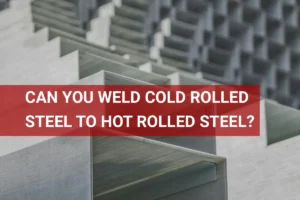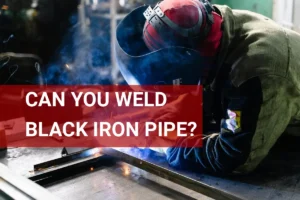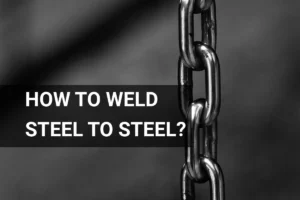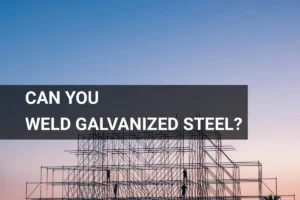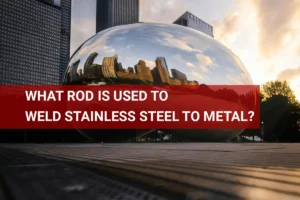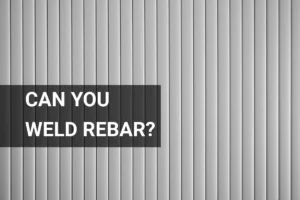How to Weld With 7018? Techniques, Tips, and Safety Essentials
Published on: February 8, 2025 | Last modified: March 4, 2025
By: Joe Carter
7018 is a type of welding electrode commonly used in stick welding. It’s known for producing strong, high-quality welds due to its low hydrogen content.
One thing that’s regularly asked of me is how to weld with 7018. It’s crucial to follow specific techniques to get the best results and avoid defects. From my experience, mastering this electrode enhances your welding skills and boosts your confidence in projects.
In this article, I’ll cover the basics of 7018, different types and their weldability, prerequisites for successful welding, step-by-step instructions, safety tips, and various welding techniques, such as how to weld vertical with 7018. We’ll also discuss factors to consider, common issues, aftercare, inspection, advanced tips, and the benefits of using 7018.
Contents
- How to Weld With 7018?
- What is 7018?
- Types Of 7018 and Their Weldability
- Prerequisites
- Safety Tips
- Steps to Weld With 7018
- Types Of Welding With 7018
- Factors to Consider When Welding With 7018
- Typical Issues When Welding With 7018
- Aftercare, Inspection, and Advanced Tips for Welding With 7018
- Advanced Welding Techniques with 7018 Electrode
- Key Benefits Of Using 7018
- Real-world Uses for 7018
- Other Options You Can Consider
- Frequently Asked Questions (FAQs)
- Conclusion
- References
How to Weld With 7018?
7018 is a low-hydrogen electrode that provides strong, ductile welds. To weld with 7018, set your arc current to 85-180 A (Amps) and maintain a travel speed of 6-12 inches per minute. It’s ideal for structural steel but can be tricky for beginners.
What is 7018?
The 7018 is a low-hydrogen electrode used in stick welding. It’s designed for welding carbon steel and low-alloy steel. This rod is known for its high impact and tensile strength, with a minimum breaking strength of 70,000 psi (482 Mpa). The “7018” designation indicates a tensile strength of 70,000 psi and follows the AWS A5.1 standard.
When welding with 7018, set your amperage between 70-120 A, depending on the rod size. For example, using a 1/8 inch (3.2 Mm) rod typically requires around 90 A. In my experience, a slight dragging motion works best for creating a strong bead without undercutting.
I remember the first time I tried vertical up welding with 7018. I struggled to maintain consistent heat. Balancing the electrode too much could lead to overheating or contamination. Once I learned how to weld vertical up with 7018, I realized that the right angle and speed are crucial for achieving a clean seam. You want that smooth finish, right?
Types Of 7018 and Their Weldability
What are the types of 7018, and how do they vary in welding applications?
-
E7018
This is the standard type for general-purpose welding. Set your machine to 70-110 amps based on material thickness. Clean the metal surface, then strike an arc at a 5-10 degree angle for better penetration, especially when working with steel welding.
Welding involves various risks, and it’s crucial to understand how dangerous welding can be to ensure safety.
-
E7018-1
This type offers higher strength and toughness. For welding, use 70-110 amps. Preheat materials thicker than 1/2 inch (1.27 Cm) for optimal results, and maintain a steady travel speed.
-
E7018-2
This version is designed for increased deposits and high quality. Use amperage settings around 75-100 amps. For a smooth bead, use a whip technique, oscillating gently while advancing.
-
E7018M
This has a special composition for improved performance in critical applications. Set the amp range to 70-90 amps. Control heat input carefully to prevent cracks by maintaining a consistent speed and angle.
-
E7018A1
This type is for applications requiring impact resistance and weldability at low temperatures. Use 70-110 amps. To avoid moisture absorption, store this rod in a proper container before use, and work quickly in colder conditions.
We’ve wrapped up the types of 7018 and their weldability here. Let us turn our attention to prerequisites.
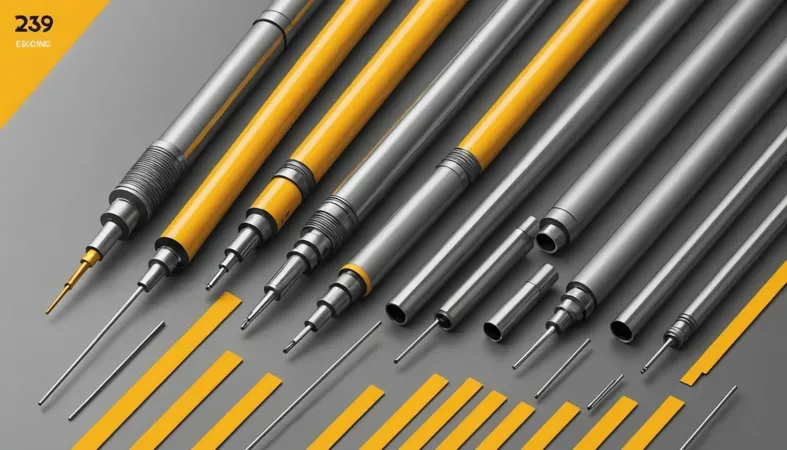
Prerequisites
What do you need to start?
- Welding Machine: You’ll need a welding machine, like the Lincoln Electric Power MIG 210 MP. It offers the amperage control required for optimal 7018 welding.
- 7018 Welding Rods: You need 7018 rods, such as the Hobart 770462. These rods create a strong, ductile (Flexible) weld suitable for critical applications.
- Chipping Hammer: A chipping hammer, like the OTC 6291, helps remove slag quickly, promoting clean welds with better integrity.
- Wire Brush: Use a wire brush, such as the Milwaukee 48-22-6710, to clean the metal before welding. Clean surfaces enhance weld quality and adhesion.
We have now covered the essential prerequisites. In the next section, we will discuss important safety tips.
Safety Tips
Let’s review essential precautions for welding with 7018.
- Wear proper PPE: Always use a welding helmet, gloves, and durable clothing, like a leather jacket. Protective gear reduces burn risks and eye injuries.
- Ensure proper ventilation: Good airflow disperses toxic fumes, preventing respiratory issues. Consider using a fan or a welding fume extractor.
- Check equipment regularly: Inspect connections and cables for damage before use. Well-maintained equipment lasts longer and prevents malfunctions.
- Keep a fire extinguisher handy: Place a Class B extinguisher nearby, rated for combustible materials. Quick access helps prevent minor flare-ups from becoming major fires.
Remember, safety comes first—I want you and everyone around you to be safe.
We have now covered essential safety precautions. Next, we will discuss the steps to weld using 7018.
Steps to Weld With 7018
We’ll cover the essential steps for successfully welding with a 7018 rod. Follow these steps carefully to achieve a strong weld.
-
Set Your Amperage
Start by setting your welder’s amperage. For a 1/8” (3.2 Mm) 7018 rod, aim for 90-130 amps. This setting provides good penetration and a solid bead. If it’s too low, the arc won’t establish; too high, and you’ll burn through.
I keep a 7018 amperage chart handy. We all make mistakes, but with practice, you’ll find your sweet spot. The thicker the material, the more amps you might need. Adjust as necessary for your situation.
-
Prepare the Surface
Clean the base metal surface to remove rust, oil, and debris. A clean surface ensures proper adhesion and prevents defects. Use a wire brush or grinder for best results—aim for a smooth, shiny surface.
When welding on vehicles it is crucial to understand which components to disconnect to prevent any damage during the process. To learn more about what to disconnect when welding on a vehicle serves as a valuable step in maintaining the safety and integrity of your vehicle’s electrical system.
I’ve learned that neglecting this step can lead to weak welds. If you’re welding on painted surfaces, strip away paint 1 inch (2.5 Cm) on either side of the joint. Trust me; it saves hassle later!
-
Strike the Arc
Strike your arc by tapping the electrode on the metal and then lifting straight up. Hold a distance of about 1/8” (3.2 Mm) from the surface for optimal arc length. A steady hand helps maintain consistent heat.
Don’t let the arc wander. An unstable arc leads to poor penetration. Stay focused on your movement; weave slightly for multi-pass welds.
-
Travel Speed
Control your travel speed while moving the electrode along the joint. A speed of 4-6 inches per minute (10-15 Cm/min) works well for many projects. Going too fast causes undercut, while too slow leads to overheating.
Finding the right speed takes practice; don’t rush it. Keep your eye on the puddle. It should be fluid and shiny for a perfect finish!
-
Use Weaving Technique
For vertical welding, consider a weaving technique to ensure full penetration. The best pattern depends on the joint type, but a “Z” or “U” shape often works well. Experiment until you find what feels comfortable.
Ever tried welding vertically with 7018? It’s challenging. But don’t fret! Slow your travel speed and maintain a tight arc length for effective results.
-
Post-weld Cleaning
After finishing the weld, cool it down gently. Remove slag while the metal is still warm. A wire brush or grinder helps eliminate impurities and prepares for the next pass.
Pay attention to any cracks or issues while cleaning. If something looks off, check your previous steps, especially amperage settings and travel speed.
We covered the steps for welding with 7018. We will now cover the different types of welding using 7018.
Types Of Welding With 7018
Let’s move on to the types. We’ll cover Shielded Metal Arc Welding, Gas Tungsten Arc Welding (GTAW), Gas Metal Arc Welding (GMAW), Submerged Arc Welding, and Flux-Cored Arc Welding.
-
Shielded Metal Arc Welding
This is commonly known as stick welding. You use a 7018 rod with a low-hydrogen coating, making it suitable for welding thick materials. If you’re looking to understand the different types of welding rods, it’s great for vertical welding; angle the rod at about 10 to 15 degrees to maintain a consistent bead. For more information on this topic, visit welding rods.
To master this skill, explore detailed steps on welding in a vertical position.
-
GTAW (Gas Tungsten Arc Welding)
GTAW uses a non-consumable tungsten electrode. When working with 7018, you typically use filler rods alongside it. This method excels in situations where weld quality is crucial, but it’s more time-consuming than others.
-
GMAW (Gas Metal Arc Welding)
Commonly called MIG welding, this method uses a continuously fed wire. When welding with a 7018 electrode, adjust your gas flow and voltage. It’s more efficient for larger projects, but it may require practice to keep your feed speed right.
-
Submerged Arc Welding
This process uses a continuously fed electrode beneath a blanket of granular flux. The 7018 rod isn’t typically used here, but it offers smooth, deep welds. It’s ideal for heavy fabrication work, often on massive structures like shipyards.
-
Flux-cored Arc Welding
This method uses tubular wire filled with flux. It works well outdoors. Using 7018 this way can produce excellent welds in windy conditions while offering flexibility and ease of maneuvering.
Factors to Consider When Welding With 7018
What factors influence your success when welding with 7018? Let’s dive in!
-
Base Metal Type
The type of metal you’re welding matters. Steel grades like A36 and A572 yield excellent results with 7018 since they match the electrode’s properties.
-
Welding Position
You can use 7018 in various positions: flat, horizontal, vertical, and overhead. It performs best in the flat position, offering better penetration and control.
-
Electrode Diameter
Choosing the right diameter is crucial. A 1/8 inch (3.2 Mm) electrode works well for most applications, providing adequate arc stability.
-
Preheating Requirements
Some steels require preheating to prevent cracking and ensure good fusion. Preheat temperatures can range from 150°F to 500°F (65°C to 260°C), depending on metal thickness.
-
Travel Speed
Your travel speed affects bead width and penetration. Aim for 5 to 12 inches per minute (12.7 To 30.5 Cm/min) based on your setup.
Typical Issues When Welding With 7018
Let’s look at common issues you might face when welding with 7018.
-
Electrode Moisture Absorption
7018 absorbs moisture easily, which can lead to rust spots or cracked welds. Dry the electrode for at least 1 hour at 350°F (177°C) and bake any damp ones.
-
Poor Arc Stability
7018 may lose stability at low voltage. If the arc flickers, check your settings or clean the workpieces. Adjust to a stable 20-30 volts.
-
Cracking in Base Metal
7018 can cause cracking due to its low hydrogen content. Look for cracks or discoloration. Preheat the steel to 250°F (121°C) to prevent cold cracks.
-
Insufficient Penetration
7018 may struggle with penetration. Inspect the bead profile; if it’s weak, increase the amperage to 120-180A for better fusion.
-
Inconsistent Bead Width
A variable bead width might occur with 7018. If it’s not uniform, adjust your travel speed. Aim for a consistent speed of 12-18 inches per minute.
Aftercare, Inspection, and Advanced Tips for Welding With 7018
Here’s essential guidance to enhance your 7018 experience.
Aftercare Suggestions
After finishing your task with 7018, wait for the weld to cool below 100°C (212°F). Then, brush away any slag using a 3M Scotch-Brite pad or a steel brush. Don’t skip this step; debris can compromise weld integrity. Invest time here for a quality result.
Inspection Insights
Inspect 7018 welds for undercut, lack of fusion, or cracks. Use a magnifying glass for close inspection; even tiny flaws can weaken weld strength. I recommend TQ2 inspection pens for precise evaluation. Aim for less than 2mm (0.08 In) of undercut along the edges.
Expert Techniques
Maintain a travel speed of 300-500 mm/min for vertical welding with 7018. This balance prevents issues like burn-through or excessive spatter. Set your amperage between 120-165 A for optimal bead placement. Remember, timing and technique are crucial at higher currents—develop a steady hand.
Advanced Welding Techniques with 7018 Electrode
Once you’ve mastered the basics, consider these advanced techniques to further enhance your 7018 welding skills.
Weaving Patterns for Different Joints
Weaving patterns can be crucial, especially for thicker materials. Here are a few patterns to consider:
| Weaving Pattern | Best Used For | Advantages |
|---|---|---|
| Z-Pattern | Fillet and overhead joints | Good control of molten pool |
| U-Pattern | Thick plate welding | Improves penetration |
| Circle Pattern | Root passes | Helps in distributing heat evenly |
Multi-pass Welding Technique
For thicker sections, multi-pass welding becomes essential. Here’s how to do it effectively:
- First Pass: Start with a stringer bead for better penetration.
- Second Pass: Use a weave pattern to cap off.
- Cooling Period: Allow the first pass to cool before applying the next.
- Angle Adjustment: Change your electrode angle slightly with each pass for even distribution.
These advanced techniques improve the overall quality of your welds and ensure strong, reliable joints using 7018. If you haven’t tried them yet, give ’em a shot!
Key Benefits Of Using 7018
The 7018 rod offers outstanding strength and ductility. You can create solid, reliable welds suitable for various applications.
Additionally, its low-hydrogen content reduces the risk of cracking, leading to fewer repairs and increased durability. It’s also ideal for horizontal, vertical, and overhead welding.
Real-world Uses for 7018
I’ve known people to use 7018 for structural welding, but it has many applications, such as:
- Building Frames: Used for welding steel frames in buildings due to its high tensile strength, making it popular in construction.
- Bridge Construction: Essential for joining heavy steel beams; 7018 offers excellent crack resistance and ductility (Flexibility).
- Automotive Repair: Ideal for welding chassis and support parts, as it provides a strong, durable joint.
- Pipelines: Commonly used for creating pipelines; it’s designed for pressure and durability, making it a top choice for gas and oil transmission.
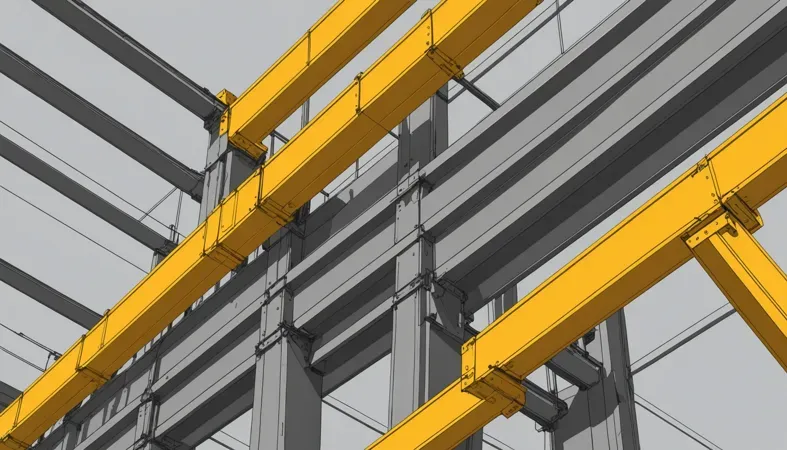
Other Options You Can Consider
When you’re looking to achieve similar results as you would with 7018, consider E6013 welding rods or E6011 rods. These options can be great for beginners or situations that don’t require the same high-strength welds. From my unique perspective, I’ve noticed that E6013 works well for flatter positions while E6011 can handle dirtier metals.
If you require a more specialized approach, flux-cored welding, like using self-shielded wires, can also provide excellent penetration and strength. Products such as Lincoln Electric’s NR-211-MP are quite popular. Also, didn’t you know? Some folks prefer MIG welding for cleaner results in similar applications. These alternatives can save time and effort while giving you great results.
Frequently Asked Questions (FAQs)
Now let us look at some common questions I typically get asked about welding with 7018.
Is 7018 Easy to Weld With?
Yes, 7018 is generally easy to weld with, especially for beginners. Its low hydrogen content reduces the risk of cracking, making it suitable for a variety of projects. Plus, a typical rod of 7018 works well on mild steel, allowing amps from 110 to 185 (Based on the Rod Diameter) for a smooth bead. To ensure accurate temperature readings in some welding applications you might need to learn more about welding thermocouple wire.
What is the Technique When Welding With 7018?
The technique when welding with 7018 involves a stringer or weave motion depending on the joint. You keep a travel speed that’s steady. This prevents overheating and ensures a strong joint. Many welders find a 1/8 inch (3.2 Mm) stick used at around 120-150 amps delivers solid results.
What Amps Do You Run 7018?
You typically run 7018 at about 70 to 140 amps (Depending on the Diameter). Running the correct amperage is important because it helps achieve optimal penetration and bead shape. For instance, a 1/8 inch (3.2 Mm) 7018 rod usually works great at 120-150 amps.
How Can I Prevent Porosity When Using 7018?
You can prevent porosity when using 7018 by ensuring proper surface cleanliness. Contaminants like oil and rust can lead to gas pocket formation in the weld. Also, keep your arc length consistent and use the right electrode angle to improve shielding and minimize defects.
Can I Use 7018 for Overhead Welding?
Yes, you can use 7018 for overhead welding, but it takes practice. The low hydrogen nature of the rod gives better control over the molten weld pool. Using a weave technique can help distribute the heat evenly, making it easier to create a solid overhead weld. When working with stainless steel, welders should be aware of the toxic substances released, which could pose health risks.
What Type Of Joint is Best for 7018?
The best joint type for 7018 is typically the butt, lap, or T-joint. These joints allow the rod to showcase its depth of penetration and strength effectively. A properly fit-up joint ensures an efficient weld, which is vital since poorly aligned joints can compromise the structure.
Conclusion
I hope this gave you what you needed about how to weld with 7018. We covered what 7018 is, different types and their weldability, prerequisites, steps for welding, safety tips, welding types, factors to consider, typical problems, aftercare, and key benefits of using 7018. We also touched on real-world uses and other options you can consider.
So, how to weld with 7018? Simply choose the right 7018 rod, set your machine to the correct amperage (usually between 70-130 amps), and maintain a steady pace. Remember to clean your metal, follow safety precautions, and inspect your welds afterward to ensure a solid outcome.
For further information and resources to enhance your welding skills, be sure to visit What is Welding, where you’ll find a wealth of detailed guides and tutorials.
References
- American Society of Mechanical Engineers. (2019). ASME Section IX: Welding and Brazing Qualifications. New York, NY: ASME.
- American Welding Society. (2020). AWS C5.6: Recommended Practices for Gas Metal Arc Welding. Miami, FL: AWS.
Joe Carter is a retired welding professional with over 40 years of hands-on experience in the industry, spanning ship repair, structural welding, and even underwater projects. Joe is a master of MIG, TIG, and Stick welding. Passionate about mentoring the next generation of welders, Joe now shares his decades of expertise and practical insights to help others build rewarding careers in welding.
7018 Electrode, American Welding Society, MIG Welding, Safety Tips, Stick Welding, Welding, Welding Applications, Welding Techniques

